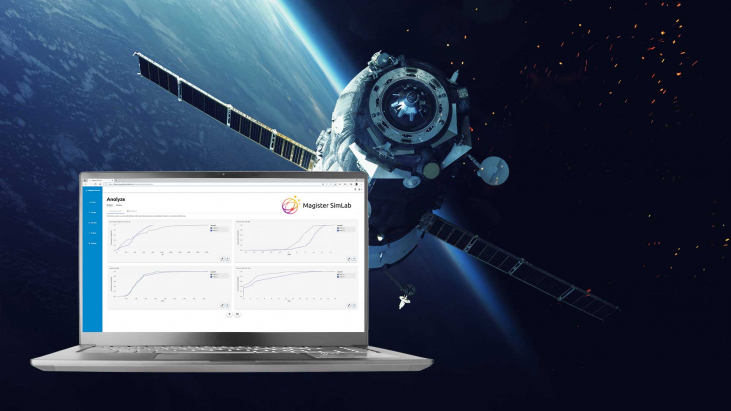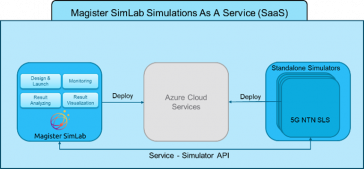
A user-friendly, high-class online simulation capability service for the satcom industry has been created and commercialised by Finnish SME ‘Magister Solutions Ltd.’, in a project supported by the ARTES Core Competitiveness programme.
System or network-level simulators are often used for research purposes to study and analyse communication networks. Most traditional telecom industry players develop system simulators in-house, but this demands substantial resources. Building simulators involves hefty costs as well as technical expertise – including software development, testing, verification and communication protocols and algorithms.
For telecom and SatCom industry players, being able to access simulators is important for internal product development, standardisation, or patenting purposes. The costs and resources needed can be prohibitive, especially for NewSpace industry players – who need to focus on their core business. In addition, simulators produced for R&D purposes are often especially tailored for a specific feature, functionality, or technology, and require a high level of technical competence.
The SCSaaS (Satellite Communication Simulations as a Service) project set out to develop a network simulation service – ‘SimLab’, providing easy-to-use access to system simulators with a fully integrated graphical user interface.
Magister is already working on a future version of SimLab, for example a C dream capacity level satellite constellation with simulation capabilities, as well as the development of spin-offs such as a stand-alone, non-cloud-based system and demonstration tool.
The project soon delivered a service built on a scalable, high-performance cloud-based architecture with possible integrations with machine learning platforms, for example.
“SimLab integrates the whole workflow of network simulation into one service starting from scenario and campaign design, through simulation execution and monitoring, to the analysis of the results with visualisations,” says ESA Technical Officer David Peilow.
In addition to developing the service, a demonstration phase with a pilot project and real customers was carried out to validate the business model. Three SatCom companies were selected as the SimLab demo users for a one month period to support their product development, R&D or business, giving very positive feedback. They made comments such as: “SimLab doesn’t require high technical knowledge , but it still does not compromise the technical details and high accuracy,” and “a real and meaningful simulation system basis for satellite constellation evaluation”. Users felt SimLab to be a sort of ‘front-end’ providing easy access to simulation platforms.

“The success point for this project is that until now, both telecom as well as SatCom industry have been accustomed to producing simulators themselves,” says Magister’s Senior Manager, Product Owner of SimLab, Sami Rantanen. “SimLab means that companies don’t have to carry out this huge effort – nor do they need to have the required technical knowledge in programming, mathematical modeling and telecommunication”.
“We want to make mobile – and satellite – network simulations available to everyone,” adds Magister’s CEO, Jani Puttonen. “Our simulation service is easy to set up, it’s secure and cost-efficient. In addition to using simulations as part of research or standardisation activities, the service also includes both great visualisations and analytics to support sales and operations. ESA’s support via funding – and importantly the agency feedback, contributed greatly – ultimately enabling us to develop and commercialise the service.”
Magister is already working on a future version of SimLab, for example a C dream capacity level satellite constellation with simulation capabilities, as well as the development of spin-offs such as a stand-alone, non-cloud-based system and demonstration tool.


